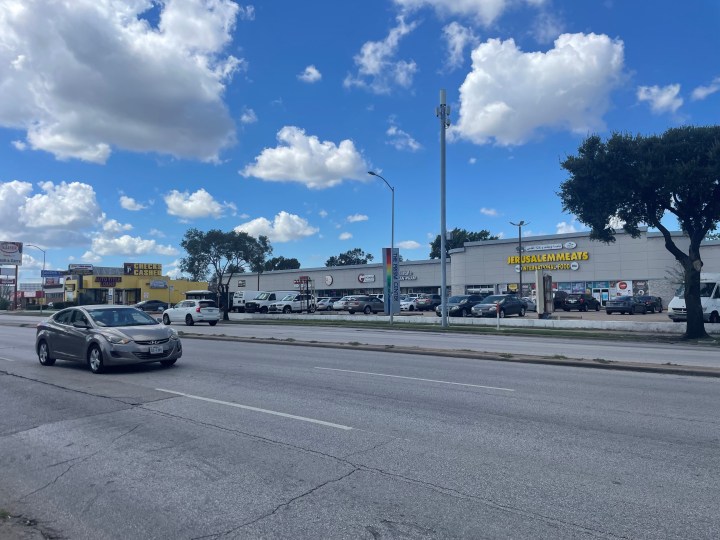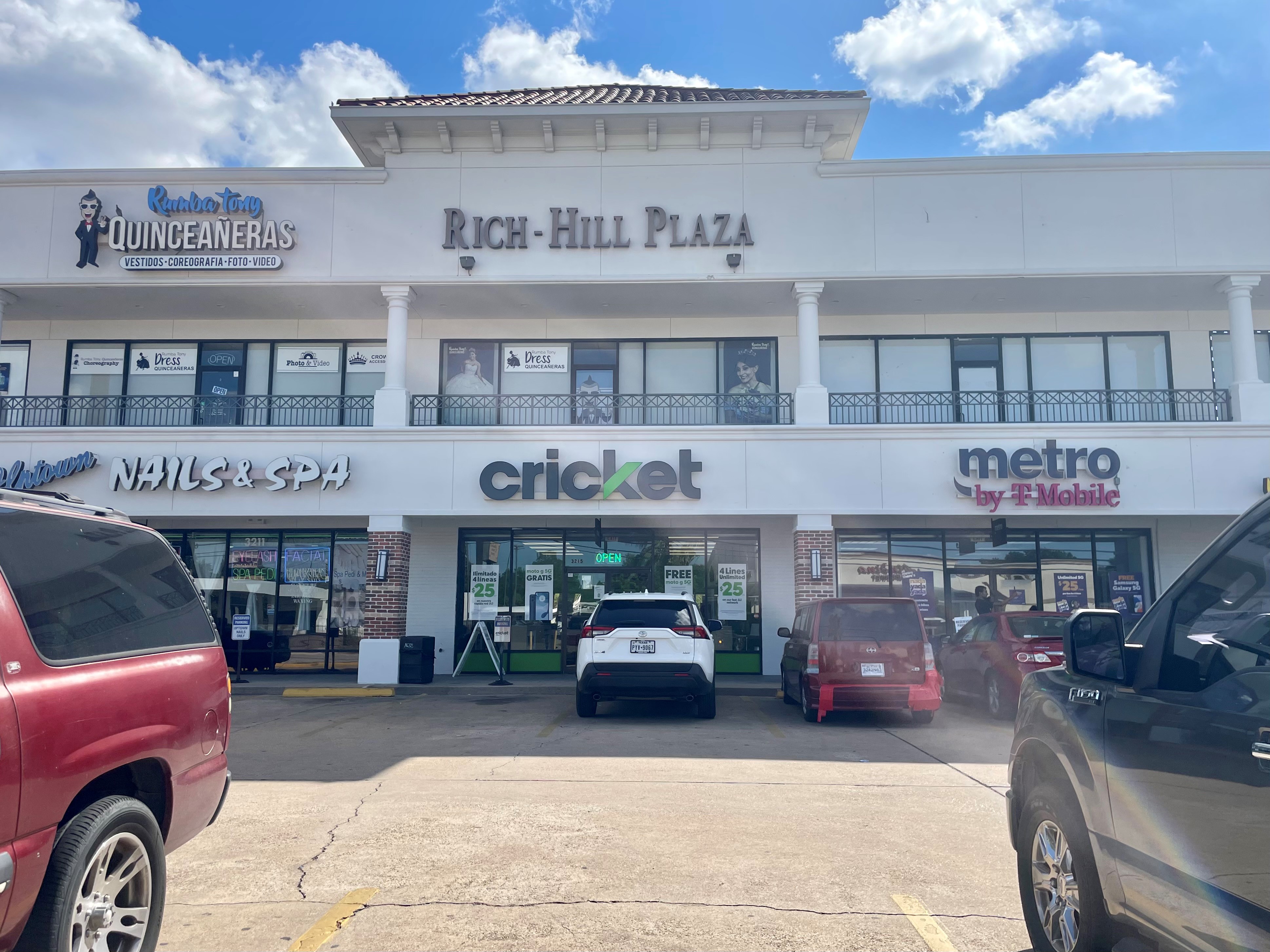
Inside Houston’s “vibrant but chaotic” strip mall economy

In sprawling, car-centric cities, strip malls that line the streets and feeder roads often get a bad rap for their boxy, utilitarian design. The Houston metro area has 1,836 of these spaces — hundreds more than both Los Angeles and Chicago, per analysis by real estate firm Colliers.
Though often maligned as eyesores, these developments have fostered a vibrant retail economy that caters to the diverse needs of an evolving, multicultural city — one that for decades has absorbed newcomers both foreign and domestic.

“I think strip malls in Houston reflect the trade-off that a lot of folks in Houston have made in terms of aesthetics for functionality,” said University of Houston economist Vikram Maheshri.
Hillcroft Street, a six-lane road that cuts through West Houston, is lined with the square, concrete developments typical of many parts of the city.
“There’s a cacophony of signs, traffic lanes, hedges and small buildings. And it just layers to a vibrant but chaotic environment that is hard to describe,” said Jesús Vassallo, architect and Rice University professor.
On Hillcroft Street, a two-story building called Rich-Hill Plaza houses a mix of retail businesses where Houstonians can drive up and get their nails done, buy a cellphone, eat Colombian comfort food or find a frilly quinceañera dress.
Architecturally, Vassallo said it’s a pretty basic space, though there’s some flair.
“This strip mall has been dressed with some mix between Spanish revival, beige stucco and ceramic tiles for the roofs, and then some more generic detailing that conveys commercial, like the pilasters,” he said. “In the end, it’s a very expedient thing that can be slapped together really quickly.”

This area is pretty typical of Houston, a driver’s city with no zoning restrictions. Vassallo said it was once cheap farmland that was developed quickly by newcomers.
“People were moving here from the Rust Belt to work in the oil and gas economy,” he said.
And as newcomers continue to migrate to Houston for jobs today, with many moving into new master-planned communities, retail strip centers are popping up nearby, said Hannah Tosch, an analyst with Colliers.
“Retail follows the rooftops,” she said, adding that Houston has the advantage of being both prosperous and among the most affordable major cities in the country, which translates into more disposable income to spend in retail spaces.
“You could argue that means more to your average strip mall retailer than it would an upscale shopping center,” Tosch said. Last quarter’s strip mall vacancy rates were 6.4% in the Houston area, she said, lower than the 8.5% average pre-pandemic.
With retail space being relatively easy to build and affordable, it also lowers the capital needed to open up a new business, which has helped aspiring entrepreneurs open up stores, according to Vikram Maheshri, the University of Houston economist, including many immigrant newcomers.
“We enjoy the fruits of all that variety here,” Maheshri said.
The simplicity of the design of these strip malls also allows them to shapeshift as neighborhood demographics change.
“You’ll drive by a place and you’ll think, ‘That looks like it was a big-box retailer,’ but now it’s a wedding venue, or, ‘That looks like it used to be a grocery store,’ and now it’s a mosque. And so I think that there’s something very modular about strip malls that allow them have second and third lives,” Maheshri said.

At the Rich-Hill Plaza on Hillcroft Street, Yiredt Delgado has been running Marine’s Empanadas for 33 years and has seen tenants come and go.
“There used to be another Middle Eastern food [place] on the corner,” she said.
But she’s stuck around due to her loyal customer base, despite rent increases. Her business has grown from two employees to 14.
“We have a nice parking lot, and people come in and park and get their food,” she said. “And also we have a lot of office buildings. And they come in for lunch, for dinner.”
“It’s very high traffic here,” said Amy Ta, who runs Uptown Nails, located a few stores down from Delgado’s empanada place. Ta took over the business when her family bought it 13 years ago. The convenient location has made it good for walk-ins, which make up about 50% of her clientele.
Though Houston may have a high concentration of strip malls, these quick-and-easy developments have become ubiquitous in urban sprawl — and Maheshri said a city’s decision to build or not build these developments reflects each community’s needs and priorities.

“While it seems like it’s a choice to have strip malls, it’s also a choice to not have strip malls,” he said. “When you put these [development] restrictions in, there are knock-on effects in the form of higher costs, higher prices that can really shape the affordability and the attractiveness of your city to potential residents.”
Though some potential newcomers may be put off by Houston’s haphazard urban design, architect Jesús Vassallo said the city’s convenient strip malls represent not just economic opportunity, but cultural value as well.
“How authentically diverse the city is and the type of vibrancy that you find in the local communities in Houston is really amazing, and it’s partially because of the affordability and availability of spaces such as strip malls,” Vassallo said.
There’s a lot happening in the world. Through it all, Marketplace is here for you.
You rely on Marketplace to break down the world’s events and tell you how it affects you in a fact-based, approachable way. We rely on your financial support to keep making that possible.
Your donation today powers the independent journalism that you rely on. For just $5/month, you can help sustain Marketplace so we can keep reporting on the things that matter to you.











